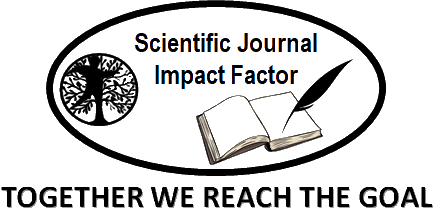Prevalence of job stress, burnout and coping strategies among the workers at Colombo Sea port in Sri Lanka
Abstract
Background
Job stress and burnout are prevalent among workers in high demand environments, such as the Colombo Sea Port. This study explores the prevalence of job stress, burnout, and coping strategies among sea port workers.
Methods
A cross-sectional study was conducted with 427 workers at the Colombo Sea Port. Data were collected using structured questionnaires focusing on job stress, burnout, and coping strategies. The prevalence of job stress and burnout was assessed, and ANOVA tests were used to identify differences based on demographic and job-related factors. Chi-square tests were employed to explore the relationship between coping strategies and stress levels.
Results
The study found that 66.7% of workers reported low levels of job stress, while 9.6% reported severe stress. Burnout, particularly occupational exhaustion, was high among workers, with 30% experiencing a high degree of burnout. Problem focused coping strategies were used by 84.5% of workers, while 70.3% used emotion focused strategies. Statistically significant differences in job stress and burnout were found across education, income, job category, and service experience while the coping strategies were significantly associated with job stress and burnout levels.
Conclusions
The findings highlight a high prevalence of job stress and burnout among sea port workers, with coping strategies playing a critical role in managing stress. Interventions targeting job stress, burnout prevention, and promoting effective coping mechanisms are essential for improving workers' mental health.
Keywords
Full Text:
PDFReferences
Faragher EB, Cass M, Cooper CL. The relationship between job satisfaction and health. Palgrave Macmillan EBooks [Internet]. 2013 [cited 2025 Mar 3]. Available from: https://doi.org/10.1057/9781137310651.001.
Tan SY, Yip A. Hans Selye (1907–1982): Founder of the stress theory. Singapore Med J. 2018;59(4):170–1. https://doi.org/10.11622/smedj.2018043.
Fink G. Stress, definitions, mechanisms, and effects outlined: Lessons from anxiety. In: Stress: Concepts, Cognition, Emotion, and Behavior: Handbook of Stress. 2016. p. 3–11. https://doi.org/10.1016/B978-0-12-800951-2.00001-7.
Fink G. Stress: Definition and history. Encyclopedia of Neuroscience. 2009;549–55. https://doi.org/10.1016/B978-008045046-9.00076-0.
Asgher U, Ali T, Ahmad R, Taïar R, Moraru RI. A comparative study on organizational stress in South Asian cultures. Procedia Manuf. 2015;3:3963–70. https://doi.org/10.1016/j.promfg.2015.07.933.
Maslach C, Goldberg J. Prevention of burnout: New perspectives. Appl Prev Psychol. 1998;7(1):63–74. https://doi.org/10.1016/S0962-1849(98)80022-X.
Oluwaseyi A, Bello B. Evaluation of work-related burnout and employee’s commitment in Nigerian maritime industry (a study of dock workers in Apapa port complex) [Internet]. 2018 Mar [cited 2025 Mar 3]. Available from: https://www.researchgate.net/publication/323834020.
Upadyaya K, Vartiainen M, Salmela-Aro K. From job demands and resources to work engagement, burnout, life satisfaction, depressive symptoms, and occupational health. Burnout Res. 2016;3(4):101–8. https://doi.org/10.1016/j.burn.2016.10.001.
Hinderer KA, VonRueden KT, Friedmann E, McQuillan KA, Gilmore R, Kramer B, et al. Burnout, compassion fatigue, compassion satisfaction, and secondary traumatic stress in trauma nurses. J Trauma Nurs. 2014;21(4):160–9. https://doi.org/10.1097/JTN.0000000000000055.
Pathirana J. Job stress and its impact on employee performance: With special reference to election secretariat in Sri Lanka. Manag Issues. 2019;4(1):23–33. Available from: https://www.researchgate.net/publication/351735244.
An J, Liu Y, Sun Y, Liu C. Impact of work–family conflict, job stress and job satisfaction on seafarer performance. Int J Environ Res Public Health. 2020;17(7):2191. https://doi.org/10.3390/ijerph17072191.
Karnia R. An Evaluation of Stress and Burnout in Education and Its Impact on Job Performance and Work Life Quality. International journal of psychological studies. 2023 Oct 30;15(4):13–3.
Vijayan M. Impact of job stress on employees’ job performance in Aavin, Coimbatore. J Organ Hum Behav. 2017;6(3):21–9.
Faragher EB, Cass M, Cooper CL. The relationship between job satisfaction and health: A meta-analysis. Occup Environ Med. 2005;62(2):105–12. https://doi.org/10.1136/oem.2002.006734.
De Silva P, Hewage C, Fonseka P. Measurement of burnout: Validation of the Sinhala translation of Maslach Burnout Inventory - Educators Survey among female primary school teachers in Sri Lanka. Galle Med J. 2013;18(1):8. https://doi.org/10.4038/gmj.v18i1.5512.
De Silva RD, Thilakasiri KK. Analysis of stress on employees’ productivity: A study based on Air Force officers in Sri Lanka. Kelaniya J Hum Resour Manag. 2014;9(1–2):118. https://doi.org/10.4038/kjhrm.v9i1-2.16.
DOI: http://dx.doi.org/10.52155/ijpsat.v49.2.7042
Refbacks
- There are currently no refbacks.
Copyright (c) 2025 Nissanka Achchi Kankanamalage Ayoma Iroshanee Nissanka, Monika Priyadarshani Wijeratne, Herath Mudiyanselage Chaminda Prasad Herath

This work is licensed under a Creative Commons Attribution 4.0 International License.



















